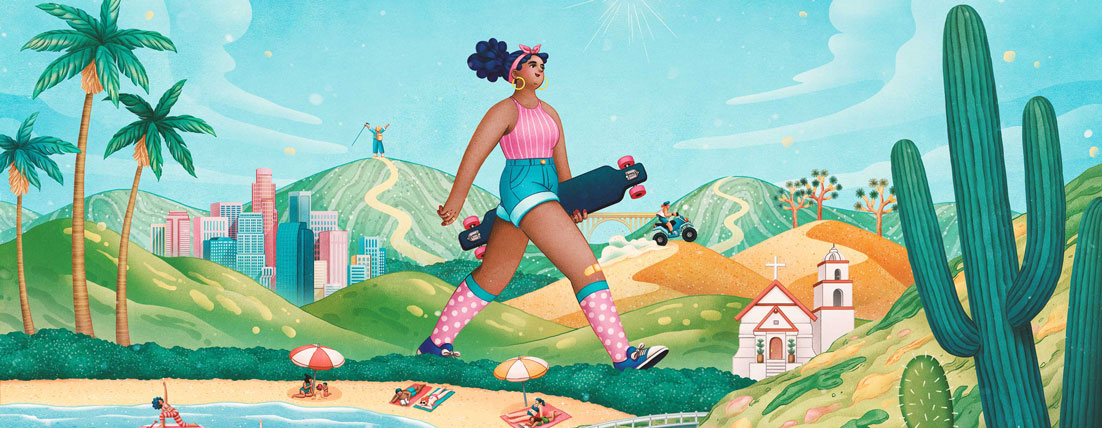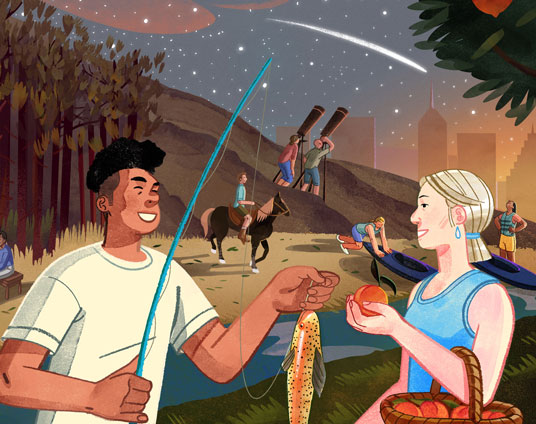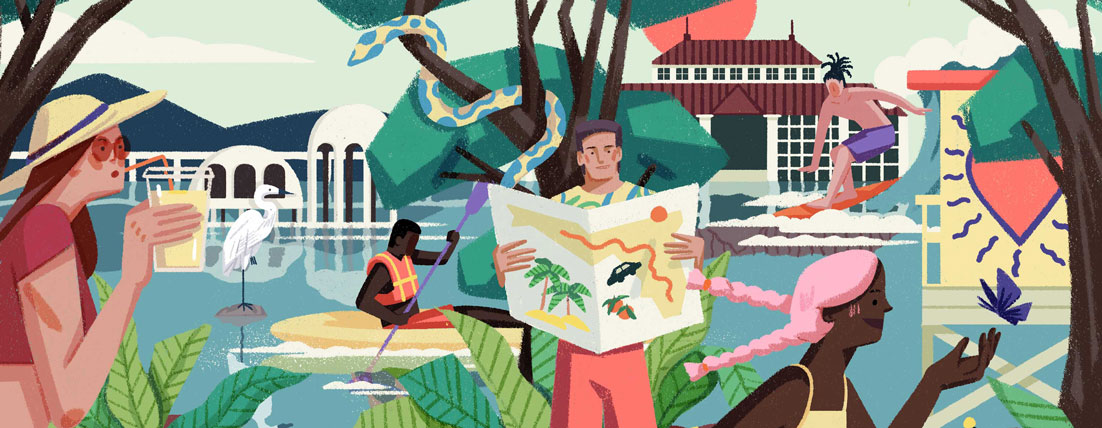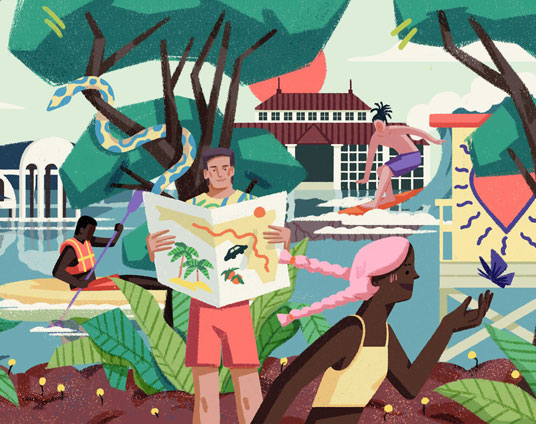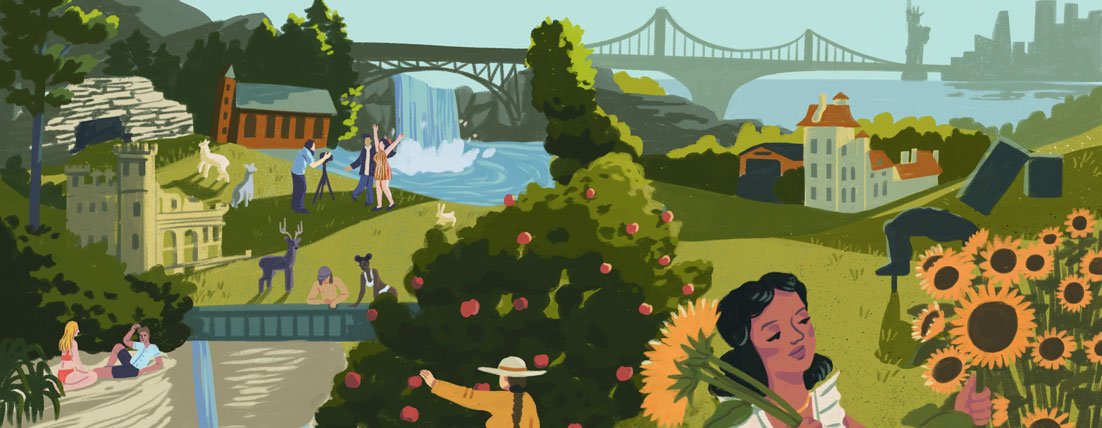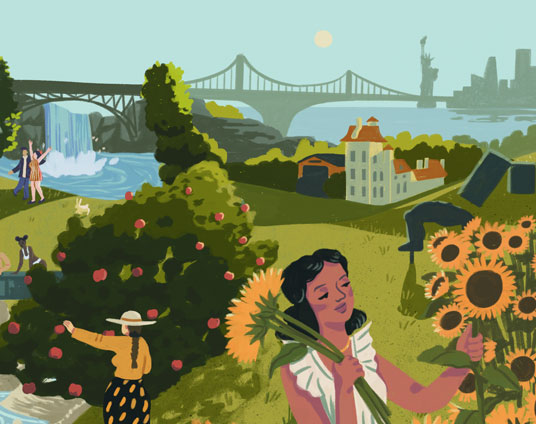Our Favorite Day Trips from Denver
Neck-craning peaks, alpine lakes, and an Old West ghost town are just some of the high-altitude awesomeness awaiting you on the outskirts of the Mile High City.
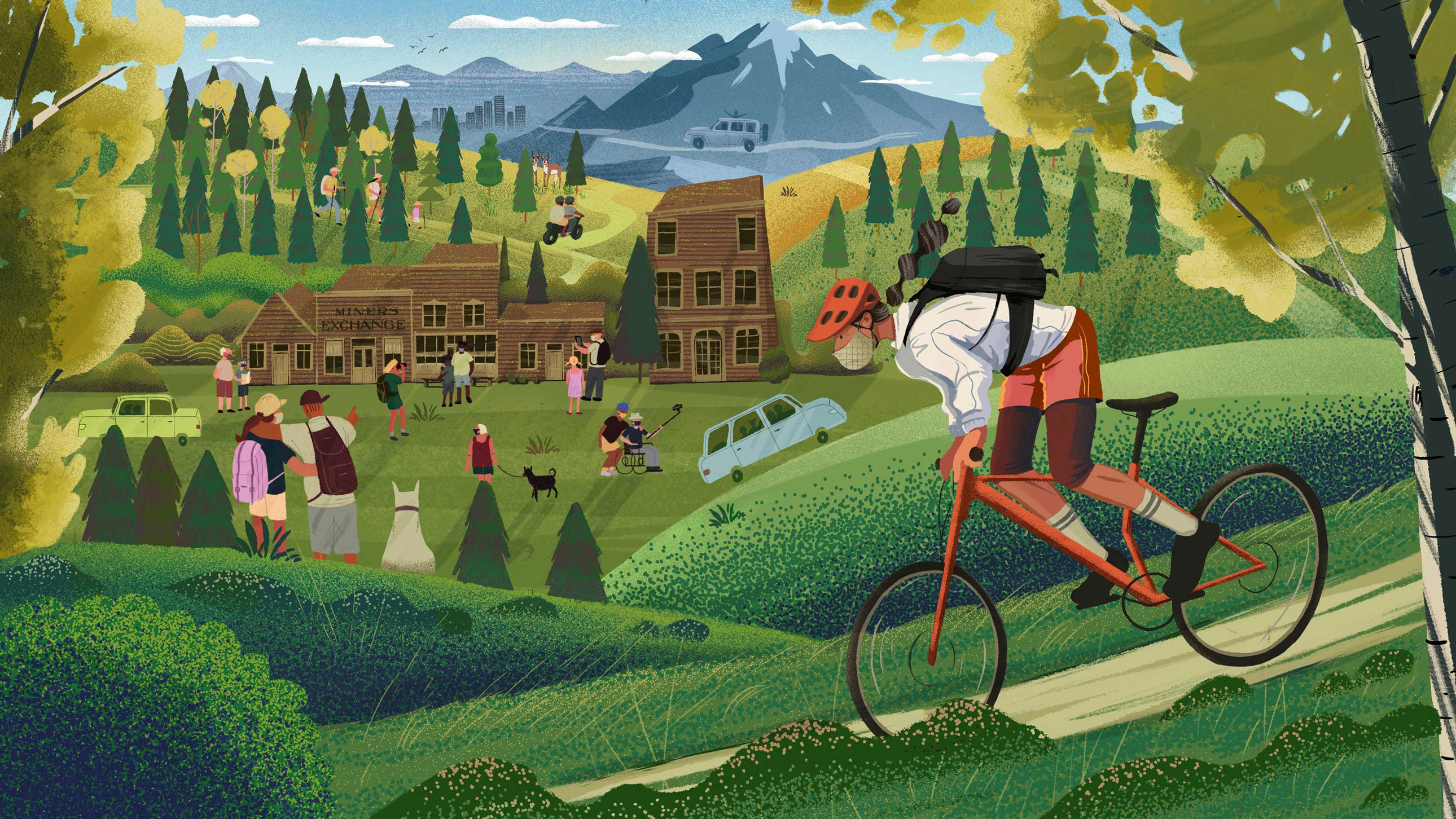
Road trips are a way of life in Colorado, and Denver is the optimal starting point for exploring the state’s natural wonders, historical sites, and teeming wildlife. From the Great Plains (yes, there is some flat land here) to the craggy Rocky Mountains, there’s more to discover than is possible in a single day trip. That’s why we’ve compiled this shortlist of itineraries fit for a socially distant adventure. But before you hit the road, be sure to check the state’s COVID-19-related quarantine requirements as well as the Airbnb Editorial team’s New Rules of Road Tripping guide.

1 Hour Away
Nederland
Boulder’s quirky cousin 30 minutes to the west is often overlooked in favor of the college town. That means the high-country locale (elevation: 8,228 feet) encircled by two separate wilderness areas, a state park, and a ski area is still something of a local secret.
See
Colorado is home to 26 officially designated scenic and historic byways, but the Peak to Peak is the oldest. Established in 1918, it travels 55 glorious miles north from Black Hawk/Central City to Estes Park, with plenty of photo ops of quintessential Colorado landscapes from the surrounding Indian Peaks and James Peak wilderness. Come during fall, and aspens will brighten your drive with bursts of yellow and orange.
Do
For a landlocked state, Colorado has a lot of water to play in. The best way to earn a dip is to hike to an alpine lake. Lost Lake Trail, which starts west of town, is about a four mile round-trip hike where you'll pass a few small waterfalls along the way.
Loveland
Fort Collins gets all the attention, but Loveland is closer to the city and home to some of the state’s most scenic bodies of water, including Boyd Lake State Park and Carter Lake Reservoir, as well as Devil’s Backbone Open Space, a hot spot for hiking and mountain biking.
See
Every Valentine’s Day, lovers around the world send their valentines through the Sweetheart City so they can be hand-stamped with a special design. But you don’t have to visit in February to feel the love: Drive by the new 12-foot-tall heart sculpture near Lake Loveland, designed by Doug Rutledge, a local structural engineer. It’s his second love lock creation. The first, a 30-foot-wide installation that spells out “L-O-V-E,” sits outside the town’s Visitors Center, 10 minutes away.
Do
Hiking the remote switchbacks into Pinewood Reservoir can make you feel like you’re exploring some undiscovered nook of the Rocky Mountains. Its 100 acres are closed to motorized watercraft, leaving ample room to maneuver your stand-up paddleboard through the trout-filled water — five species call the reservoir home — and take in views of the surrounding foothills.
Local Hosts Also Recommend: Benson Sculpture Garden
“They have over 150 world-renowned sculptures,” says Airbnb Superhost Katy DeJonge. The Northern Colorado resident suggests visiting during off-hours to avoid crowds. “Take any of the trails in the park to see them. I know plenty of friends who take their kids there.”

2 Hours Away
Pawnee National Grassland
There’s more to Colorado than mammoth mountain peaks. The state’s overlooked prairie region packs just as much raw natural beauty per square mile as any Rocky Mountain ramble. And you won’t find more of it than around the two oddly shaped buttes rising from Pawnee National Grassland and its almost 200,000 acres of ancient pines, grazing pronghorns, and protected prairie land.
See
When meteor showers are in the forecast, Denverites head to Pawnee. While it’s not officially Dark Sky certified, the expansive, isolated space is among the darkest sites near the Mile High City, making stargazing a must. Catch the celestial show at the Crow Valley Recreation Area and campground.
Do
Pack binoculars to properly experience this renowned birding destination. If you’re lucky, you’ll spot Colorado’s state bird, the lark bunting, along with burrowing owls, mountain plovers, and hawks, among myriad other species that migrate through the area. Follow the forest service’s 21-mile-long, self-guided driving tour for tips on where to look.
Salida
Centrally located Salida is an ideal base camp for summer and fall adventures. The former mining town turned art enclave is the center of Colorado’s whitewater activity, situated on the banks of the Arkansas River and close to raftable Browns Canyon, the state’s newest national monument.
See
Downtown Salida contains 100 turn-of-the-20th-century buildings. Walk or drive the main strip to see the best of them, and keep an eye out for its many murals and public art installations. The town is one of the state’s first two Certified Creative Districts, home to 30 artist-run galleries, many of which showcase contemporary takes on Western art.
Do
Two-wheelers can access more than 500 miles of mountain bike trails in the area. The challenging Monarch Crest Trail is a dream ride for experienced pedalers, one of just four backcountry trails in the state to earn the “Epic” ride designation from the International Mountain Bicycling Association. Methodist Mountain trail system’s 20 bikeable miles are easily accessible from town with options for those still getting introduced to the concept of singletrack.
Local Hosts Also Recommend: Bonanza, Colorado
“At over 9,000 feet, the vistas are just phenomenal,” says Airbnb Superhost Laura Eicher. The Colorado native takes an annual camping trip near the abandoned mining town, which offers hundreds of miles of hiking trails. “You see the old mills and get a feel for how people tried to scrape out a living here.”

3-4 Hours Away
La Junta
To get a true taste of Colorado’s history, you need to visit one of its small towns. La Junta (Spanish for “junction”) was an important stop for traders along the Santa Fe National Historic Trail in the 19th century. Today, U.S. Highway 50 zips through it, and the closest thing to trade you’re likely to find are roadside stands hawking locally grown cantaloupes.
See
Just outside of town, Bent's Old Fort National Historic Site is a reconstruction of the original venue built along the Santa Fe Trail in 1833. The fort was a major hub for trappers, traders, and travelers from all over. Historical reenactors do their best to play up the 19th-century Old West vibe, especially for the kids. Make time for a photo op of the fort’s famous adobe facade, or explore the grounds on a self-guided tour.
Do
Hike to the most expansive dinosaur tracksite in the country at the Picket Wire Canyonlands. The rigorous roundtrip trek leads you to nearly 2,000 prehistoric prints — remnants of Apatosaurus and Allosaurus footsteps among them — that are spread out over a quarter-mile.
St. Elmo
If you’re looking to take your social distancing to the next level, you can’t beat a good ghost town. While the Centennial State has no shortage of these abandoned relics of the Wild West, St. Elmo tops the list. It’s meticulously preserved and easily accessible by car thanks to a maintained dirt road. And, naturally, it’s haunted.
See
Twelve of Colorado's tallest peaks — our claim-to-fame fourteeners — define the landscape of Chaffee County. The local lineup includes Mount Elbert, the highest point in the state at 14,433 feet. The rock formations seem to jut up everywhere you look, but do yourself a favor and pull over to really take in their grandeur.
Do
Founded in 1880, St. Elmo was once home to about 2,000 residents. At its height, the district had saloons, restaurants, dance halls, and a schoolhouse. Wander its still-standing structures, including the general store, which, shockingly, still operates (albeit according to social distance guidelines) in the summer.
Local Hosts Also Recommend: Twin Lakes, Colorado
“You feel like you can reach out and touch the mountains,” says Airbnb Superhost Laurie Peter. The Steamboat Springs resident says Twin Lakes is her favorite place for paddleboarding, kayaking, and trout fishing. “I recommend going in the morning when the water is like glass. You get the feeling that the city is really far away.”

Daliah Singer is an award-winning writer and editor exploring the world from her home base in Denver. When she's not working, you can find her adventuring in the Rocky Mountains, planning her next trip, or curled up with a book and a cup of tea.

Emine Yilmaz an Illustrator and Designer. She was born and raised in Turkey, currently lives in New York City. She specializes in commercial and editorial illustrations. She likes creating tiny people in a big environment, by creating visual metaphors in her works. She is always trying to infuse a message in her art that's clear and enjoyable.
